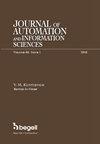VALIDATION OF LAND DEGRADATION CARDS ON THE BASIS OF GEOSPATIAL DATA
Q3 Engineering
Journal of Automation and Information Sciences
Pub Date : 2022-01-01
DOI:10.34229/1028-0979-2022-1-10
引用次数: 0
Abstract
Today there is a lot of satellite data and products based on it in the public domain. By integrating them with heterogeneous socio-economic information and soil maps, model biophysical data using modern machine learning methods and modern approaches to geospatial data processing, it becomes possible to create maps of land degradation. Considering that classification maps, productivity maps and deforestation maps are the main intellectual components to create a degradation map, it is these products that affect the overall reliability of the results. For their validation, the necessary quality metrics are determined in the work, and the corresponding calculations are made. To evaluate the land cover map, independent test data were used to build a confusion matrix, and the obtained areas of the main crops were compared with statistical data. Agricultural land productivity was estimated using time series land cover classification maps and Crop Growth Modeling System (CGMS) biophysical plant development, as well as biophysical plant growth parameters using satellite data and biophysical plant development models. The LAI Map Accuracy Assessment (based on CGMS) is based on the comparison of Leaf Area Index (LAI) values modeled using the CGMS software framework with LAI ground measurement data collected through ground surveys. Numerous experiments were carried out to assess the quality of models and the results of deforestation maps on an independent test sample, which was not used at the neural network training stage. Degradation maps for several years were also analyzed and their validation was carried out with respect to productivity, in particular for the region that has undergone significant changes for the territory of Ukraine.基于地理空间数据的土地退化卡片验证
今天在公共领域有很多卫星数据和基于它的产品。通过将它们与异质社会经济信息和土壤图相结合,利用现代机器学习方法和现代地理空间数据处理方法对生物物理数据进行建模,可以创建土地退化地图。考虑到分类图、生产力图和森林砍伐图是创建退化图的主要智能组件,正是这些产品影响了结果的整体可靠性。为了验证它们,在工作中确定必要的质量度量,并进行相应的计算。为了对土地覆盖图进行评价,利用独立试验数据建立混淆矩阵,并将得到的主要作物面积与统计数据进行比较。利用时序土地覆盖分类图和作物生长模拟系统(CGMS)的生物物理植物发育,以及利用卫星数据和生物物理植物发育模型的生物物理植物生长参数估算农业土地生产力。LAI地图精度评估(基于CGMS)是基于CGMS软件框架建模的叶面积指数(LAI)值与通过地面调查收集的LAI地面测量数据的比较。在神经网络训练阶段未使用的独立测试样本上,进行了大量实验来评估模型的质量和毁林图的结果。还对几年来的退化图进行了分析,并对生产力进行了验证,特别是对乌克兰领土发生重大变化的区域。
本文章由计算机程序翻译,如有差异,请以英文原文为准。
求助全文
约1分钟内获得全文
求助全文
来源期刊

Journal of Automation and Information Sciences
AUTOMATION & CONTROL SYSTEMS-
自引率
0.00%
发文量
0
审稿时长
6-12 weeks
期刊介绍:
This journal contains translations of papers from the Russian-language bimonthly "Mezhdunarodnyi nauchno-tekhnicheskiy zhurnal "Problemy upravleniya i informatiki". Subjects covered include information sciences such as pattern recognition, forecasting, identification and evaluation of complex systems, information security, fault diagnosis and reliability. In addition, the journal also deals with such automation subjects as adaptive, stochastic and optimal control, control and identification under uncertainty, robotics, and applications of user-friendly computers in management of economic, industrial, biological, and medical systems. The Journal of Automation and Information Sciences will appeal to professionals in control systems, communications, computers, engineering in biology and medicine, instrumentation and measurement, and those interested in the social implications of technology.
 求助内容:
求助内容: 应助结果提醒方式:
应助结果提醒方式:


